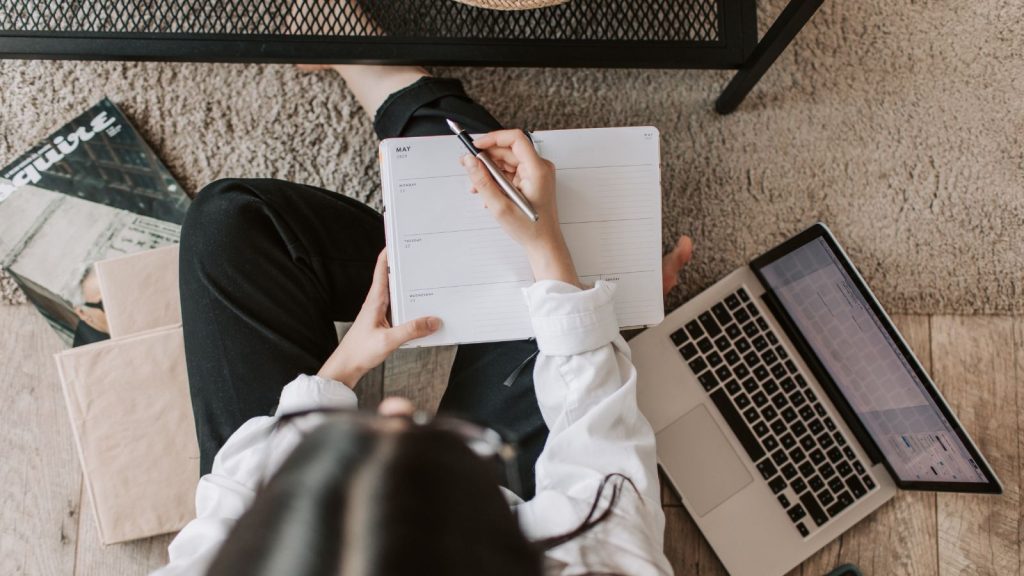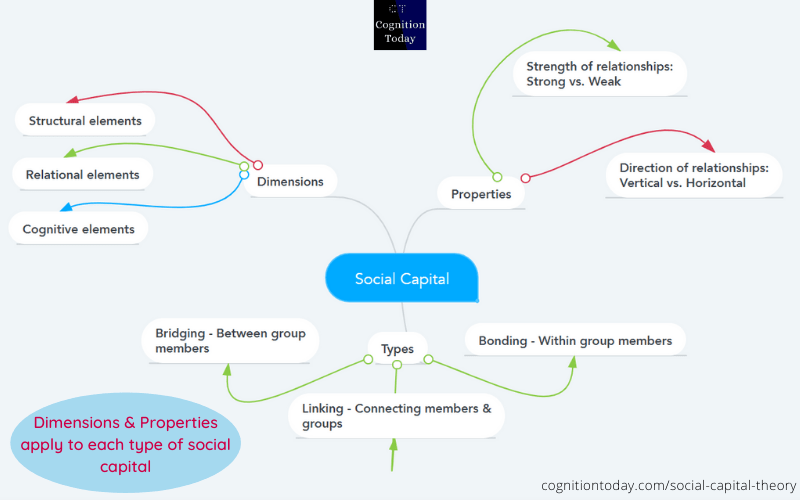The main contributing factor[1] in how note-taking improves learning is the encoding effect – notes help the learner improve information encoding, which is translating the information from your senses to human memory. The first step of memory formation is encoding. Our learning’s strength and reliability depend on how well and accurately the material is encoded.
Encoding while reading occurs at 4 levels:
- Auditory: Spoken and reading information for new content.
- Semantic: The meaning of information, recognizing the terms you already know and don’t know.
- Visuo-spatial: Understanding processes and arrangement of information (classifications, flow charts, cycles, equations, geometry, visual examples of objects, anatomy, etc.).
- Elaborative/associative: Connecting encoded information to concepts you already know and adding details to new learning.
Note-taking while reading allows all 4 levels of memory encoding, so it tends to improve learning.
For high school graduates[2], note-taking improves reading comprehension based on how well the material is summarized. When students took notes spontaneously with no preparation, the quality and compactness of notes helped exam performance, particularly when they had the chance to review their notes while writing essays. This indicates that reviewing your notes while doing your study task helps a lot. The study also says summarizing content helped learning more than copying it word-for-word. So essentially, note-taking helped when students summarized and successfully encoded the information.
Students also recall information better[3] when they take notes than when they don’t. Students tend to remember more key concepts and also find relationships between concepts (which is very useful for quality learning) when they take notes. Notes offer a global birds-eye view perspective on the material and also highlight details (which I discuss later in this article).
Pros of taking notes
- Better memory for important details.
- Better understanding of central concepts.
- Better reading comprehension.
- Reduced mind-wandering during lectures.
- A distilled, compactified way to revise your material.
- Re-organize information in meaningful ways (formatting, restructuring, highlights, etc.)
Cons of taking notes
- Attention is split. And too much goes to notes without understanding the source material.
- Wasting time by copying material without comprehending it for the sake of note-taking.
- Easy distraction from the learning material to make notes pretty or clean.
- Note-taking increases the mental burden[4] on students while reading because they have to manage both notes and reading material. If doing both takes too much effort, it imposes a very high “cognitive load,” which can hamper learning through exhaustion or unnecessary effort.
5Rs method
One of the popular note-taking methods is called the 5 Rs Cornell note-taking method: Record, Reduce, Reflect, Recite, & Review.
- Record: Jot down the key concepts, terms, diagrams
- Reduce: Compactify the core learning material
- Reflect: Use the notes and reading material to think about what you’ve learned and connect it to other material, your experiences, and other examples
- Recite: Rehearse your notes out loud with your voice, slowly, to process them deeply.
- Review: Return to your notes and review them periodically to improve memory and comprehension

How should you note down your material?
You can take notes in a notepad/notebook or on your phone or laptop using Google docs, Grammarly, Trello, Slack, or Microsoft Word.
One of our best memory systems is memory for locations. So having notes in many different locations is quite helpful. Different locations create a map and an easy way for you to track down what you know. You are more likely to remember where to find the information you are looking for than what it is. So you might remember you noted down an important formula on your self-Whatsapp chat, and saved 2 images of chemistry facts on Insta. This variety is good in moderation.
Add media to your notes: Audio recordings, screenshots, photos, Pinterest pins, Instagram saves, Reddit saves, etc. Or go traditional with a highlighter, a notebook, and 2 colored pens for neatness.
- Think of notes as content creation – make reels, blogs, infographics, videos, shorts, etc., discussing what you learned.
- Mindmaps or knowledge maps are useful ways to take notes[5] too. They help conceptual understanding of scattered content.

All styles of notes are helpful because they follow the “production effect[6].” It describes how memory for information produced by our active senses (auditory – voice, touch – writing) is remembered better than information passively absorbed through our ears and eyes. Your notes then start “generative learning[7]” – we remember and understand information connected to already learned information better.
Richness and variety in your notes can have a multimedia effect[8] that leads to deeper encoding that helps you connect new information to previously learned information.
When should you take notes?
- Your notes are an “interpretation” and “reference” for future learning.
- When reading material is complex and broad
- To improve comprehension and memory.
- Comprehension improves when you reproduce your material in your own words and highlight key concepts.
- Memory improves when you process that information deeply by putting in the effort.
When should you not take notes?
- When your memory is enough.
- You realize your notes are not helping. That’s when you try new sources for learning or change your approach to notes.
- You want to familiarize yourself with new content (take notes while re-reading).
Note-taking reduces mind-wandering, so improves focus
Researchers say[9] mind-wandering affects the relationship between learning and memory while taking notes. Note-taking reduces mind-wandering, which increases attention to the information and therefore improves memory. Writing notes reduces random distracting thoughts because the brain is fully engaged in writing and listening. There is no surplus attention remaining for the mind to wander. You’ll notice it happens when the brain is not engaged and you do a mindless routine habit like washing dishes or cleaning.
Note-taking Effort improves learning
Even while taking notes, the effort put into the notes improves how much attention goes to the information. Information that is processed very shallowly leads to weak learning. Elaborative rehearsal or deep encoding is a well-documented phenomenon where deeper or elaborate/effortful processing leads to better memory. Shallow encoding is quickly forgotten. Taking notes is deep encoding.
Related: Tests can add a different kind of anxiety in the testing room or exam hall. Follow these quick behavioral techniques to reduce test anxiety there and then.
What to write: Concrete details or general themes/concepts?
First things first[10], noting down exact content hampers learning, and noting down summaries and key terms improves learning. But how detailed should you go?
We can think of learning at 2 levels: Global level (called high construal) and local level (called low construal). Global captures broad themes, relations, context, and concepts. Local captures specific details like facts and terms. We need both for good learning and exams. If you want to take notes for conceptual understanding like tree classifications, new concepts in geometry, etc., you are thinking with a high construal. It triggers abstract and broad learning. If you are studying the parts of a cell body, you are thinking with a low construal level. It triggers factual and detailed learning. Both are needed for context + details.
While thinking, details are easily brought into awareness by other details. And global themes are easily brought into awareness by other global themes. That’s how attention and memory work. More on the theory here and here. Narrow processing is like traveling through internal roads in a city – they connect better to nearby regions. Abstract processing is like traveling via the freeway, which connects farther regions better.
High construal-level thinking is big-picture, global, abstract, or contextual thinking. Low construal level thinking is detail-oriented, narrow, concrete/factual, and targeted thinking.
The type of notes you take is a way to manipulate both local (low construal) and global (high construal) thinking
- Low construal notes are – clean, thorough words, cover all ideas and nuances. The focus is on precision. Lists of properties, compare/contrast, names, definitions, etc.
- High construal notes are – scribbled, diagram-oriented, capture the central themes and relationships. Connections between ideas, indexes, maps, mindmaps, questions to the self, prompts and reflections about the study material, etc.
Low construal notes (focusing on local nuances) should promote memory for details and deductive thinking. High construal notes (focusing on the global big picture) should promote memory for large relationships among ideas and abstract/creative thinking.[11]
How to write: Handwritten or laptop and phone notes?
A study published in January 2022[12] in Contemporary educational psychology says digital notes and handwritten notes are equally effective. The main problem occurs when a student is heavily distracted. By design, note-taking reduces the possibility of distractions because the brain is fully engaged in studying, and any surplus attention can be used for improving notes.
A high word count improves learning (probably indirectly through more keywords, more attention, and deeper processing) and verbatim notes worsen learning (probably indirectly through shallow processing and mental copy-pasting). Chances are handwritten notes and digital notes are likely to have similar effects on learning[13] and may differ based on convenience and physical ease of typing or writing.
Pros & cons of digital vs. handwritten notes
| Digital | Handwritten | |
|---|---|---|
| Pros | Learning curve, need a device | Free-flowing and creative, easy |
| Cons | Distractions, technical issues | Assignments are often digital |
Facts vs. Interpretations
Notes can be factual or interpreted, and both have their uses. Interpretation involves more thinking and may benefit conceptual understanding. Writing down factual information will improve memory, even if it is without understanding, just through repetition and rewriting that information. It also allows fact verification when in doubt.
Suppose you don’t want to take notes but want to memorize still, use specific memorizing techniques.
Note-taking templates
A systematic note-taking style is not necessary. You can customize based on the material. Hundreds of templates are available, but unstructured or self-structured notes are the most common. And just as good as rigid methods. Self-regulated learning, which is what you do while taking notes, is best done when you have control over how you take notes.
But to get started with some structure in your notes, start with:
- One page can have a small box that lists keywords.
- The bottom section can list confusing concepts.
- One section can be dedicated to examples or relationships among concepts.
- Make a diagram page.
- Reorganize information with examples, diagrams, or tables. Reorganizing helps.
- List down definitions and facts with highlighted context.
- Prepare questions you want to answer and explore content in the next few pages.
Related: How to optimize learning from video material
Sources
[2]: https://www.sciencedirect.com/science/article/abs/pii/S0361476X98909808
[3]: https://readingmatrix.com/articles/april_2011/rahmani_sadeghi.pdf
[4]: https://onlinelibrary.wiley.com/doi/abs/10.1002/acp.1086
[5]: https://link.springer.com/article/10.1007%2Fs10639-021-10693-y
[6]: https://pubmed.ncbi.nlm.nih.gov/25483326/
[7]: https://link.springer.com/article/10.1007/s10648-015-9348-9
[8]: https://smartech.gatech.edu/handle/1853/3491
[9]: https://psycnet.apa.org/record/2021-59959-001
[10]: https://www.sciencedirect.com/science/article/abs/pii/S1041608022001303
[11]: https://www.buymeacoffee.com/AdityaShukla
[12]: https://www.sciencedirect.com/science/article/abs/pii/S0361476X21000849
[13]: https://journals.sagepub.com/doi/10.1177/0956797620965541?icid=int.sj-abstract.similar-articles.2

Hey! Thank you for reading; hope you enjoyed the article. I run Cognition Today to capture some of the most fascinating mechanisms that guide our lives. My content here is referenced and featured in NY Times, Forbes, CNET, and Entrepreneur, and many other books & research papers.
I’m am a psychology SME consultant in EdTech with a focus on AI cognition and Behavioral Engineering. I’m affiliated to myelin, an EdTech company in India as well.
I’ve studied at NIMHANS Bangalore (positive psychology), Savitribai Phule Pune University (clinical psychology), Fergusson College (BA psych), and affiliated with IIM Ahmedabad (marketing psychology). I’m currently studying Korean at Seoul National University.
I’m based in Pune, India but living in Seoul, S. Korea. Love Sci-fi, horror media; Love rock, metal, synthwave, and K-pop music; can’t whistle; can play 2 guitars at a time.



























